#Learn Python from A to Z
Explore tagged Tumblr posts
Text
Introduction to Python Programming
Introduction to Python Programming
Python is one of the top programming dialects on the planet, generally utilized in fields, for example, artificial intelligence, AI, information science, and web improvement.
The basic and English-like punctuation of Python makes it a go-to language for novices who need to rapidly get into coding.
Since Python is utilized in different fields, there is a popularity for Python designers, with cutthroat base compensations.
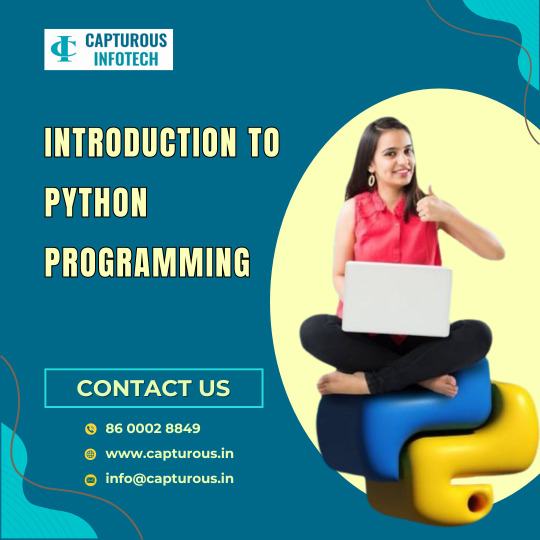
Beginning with Python
Python is a flexible, significant level programming language that is broadly upheld across all major working frameworks.
To execute Python code, you want to have a Python translator introduced on your framework. In any case, to begin right away, you can utilize our free web-based Python supervisor that empowers you to run Python code straightforwardly in your program — no establishment required.
Is Python for you?
Whether Python is the ideal decision relies upon what you need to achieve and your vocation objectives.
Python according to Learning Point of view
Assuming you are new to programming and favor effortlessness, Python is most likely the best decision for you.
Here, the two projects in C and Python play out a similar errand. Nonetheless, the Python code is a lot more clear, regardless of whether you have never been a software engineer.
That being said, there are a few benefits to learning dialects like C as your most memorable language. For instance, C is a lot nearer to the equipment and permits you to work with PC memory straightforwardly, in this way giving you a more profound comprehension of how your code really functions.
Then again, Python's reasonable, English-like grammar permits you to focus on critical thinking and building rationale without being worried about pointless intricacies.
In this way, it depends on you whether you need to rapidly get everything rolling with programming or truly take as much time as is needed to comprehend the bare essential pieces of programming.
Most effective Way to Learn Python There is no correct method for learning Python. Everything relies upon your learning style and speed. In this part, we have incorporated the best Python learning assets custom fitted to your learning inclinations, be it text-based, video-based, or intuitive courses.
Contact us 8600028849
#Best Python Courses Online with Certificates#Learn Python from A to Z#Python For Beginners#Python Courses & Tutorials#Python for beginners - Training#Best Online Python Courses and Programs#Python Course and Certification Online#Best Python Classes in Nagpur#Python Courses and Tutorials#Learn Python Programming#Best Python Training Institute in Nagpur#Introduction to Python Programming
0 notes
Text

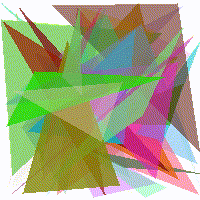
These are 50 triangles "learning" themselves to mimic this image of a hot dog.
If you clicked "Read more", then I assume you'd be interested to hear more about this. I'll try my best, sorry if it ends up a bit rambly. Here is how I did that.
Points in multiple dimensions and function optimization
This section roughly describes some stuff you need to know before all the other stuff.
Multiple dimensions - Wikipedia roughly defines dimensionality as "The minimum number of coordinates needed to specify any point within it", meaning that for a 2-dimensional space, you need 2 numbers to specify the coordinates (x and y), but in a 3-dimensional space you need 3 numbers (x, y, and z). There are an infinite amount of dimensions (yes, even one million dimensional space exists)
Function optimization - Optimization functions try and optimize the inputs of a function to get a given output (usually the minimum, maximum, or some specific value).
How to train your triangles
Representing triangles as points - First, we need to convert our triangles to points. Here are the values that I use. (every value is normalized between 0 and 1) • 4 values for color (r, g, b, a) • 6 values for the position of each point on the triangle (x, y pair multiplied by 3 vertices) Each triangle needs 10 values, so for 10 triangles we'd need 100 values, so any image containing 10 triangles can be represented as a point in 100-dimensional space
Preparing for the optimization function - Now that we can create images using points in space, we need to tell the optimization function what to optimize. In this case - minimize the difference between 2 images (the source and the triangles). I'll be using RMSE
Training - We finally have all the things to start training. Optimization functions are a very interesting and hard field of CS (its most prominent use is in neural networks), so instead of writing my own, I'll use something from people who actually know what they're doing. I'm writing all of this code in Python, using ZOOpt. The function that ZOOpt is trying to optimize goes like so: • Generate an image from triangles using the input • Compare that image to the image we're trying to get • Return the difference
That's it! We restrict how long it takes by setting a limit on how many times can the optimizer call the function and run.
Thanks for reading. Sorry if it's a bit bad, writing isn't my forte. This was inspired by this.
You can find my (bad) code here:
https://gist.github.com/NikiTricky2/6f6e8c7c28bd5393c1c605879e2de5ff
Here is one more image for you getting so far

123 notes
·
View notes
Text
Slow and Pause
Part of my solving of the issues with my sudoku solver couldn't have happened without diagnosing the problem. And that couldn't happen until I could see what the program was DOING.
Thing is, when your program does millions of things in order to get to its answer, and a terminal can only keep the last few hundred lines, you can have a hard time getting accurate info about what happened in the middle.
The two things I learned to help with that:
Pressing ctrl-z with the terminal selected will pause the program in operation. You can type "fg" and hit enter to resume the last paused program.
For Python, you can also use the sleep() function, from the Time class. So up top you add
import time
and then wherever the loop is happening that you want to see the middle of, you can add, say,
time.sleep(0.1)
This will keep looping at a pretty high clip - once every 1/10 of a second - but slow enough that you can possibly catch what's happening and press ctrl-z to pause and take a closer look. Depending on your reflexes and the length of the loop in question (or if you suspect the problem is right at the start of the looping), you can set the duration in there to whatever number of seconds works for you.
10 notes
·
View notes
Text
Understanding Outliers in Machine Learning and Data Science

In machine learning and data science, an outlier is like a misfit in a dataset. It's a data point that stands out significantly from the rest of the data. Sometimes, these outliers are errors, while other times, they reveal something truly interesting about the data. Either way, handling outliers is a crucial step in the data preprocessing stage. If left unchecked, they can skew your analysis and even mess up your machine learning models.
In this article, we will dive into:
1. What outliers are and why they matter.
2. How to detect and remove outliers using the Interquartile Range (IQR) method.
3. Using the Z-score method for outlier detection and removal.
4. How the Percentile Method and Winsorization techniques can help handle outliers.
This guide will explain each method in simple terms with Python code examples so that even beginners can follow along.
1. What Are Outliers?
An outlier is a data point that lies far outside the range of most other values in your dataset. For example, in a list of incomes, most people might earn between $30,000 and $70,000, but someone earning $5,000,000 would be an outlier.
Why Are Outliers Important?
Outliers can be problematic or insightful:
Problematic Outliers: Errors in data entry, sensor faults, or sampling issues.
Insightful Outliers: They might indicate fraud, unusual trends, or new patterns.
Types of Outliers
1. Univariate Outliers: These are extreme values in a single variable.
Example: A temperature of 300°F in a dataset about room temperatures.
2. Multivariate Outliers: These involve unusual combinations of values in multiple variables.
Example: A person with an unusually high income but a very low age.
3. Contextual Outliers: These depend on the context.
Example: A high temperature in winter might be an outlier, but not in summer.
2. Outlier Detection and Removal Using the IQR Method
The Interquartile Range (IQR) method is one of the simplest ways to detect outliers. It works by identifying the middle 50% of your data and marking anything that falls far outside this range as an outlier.
Steps:
1. Calculate the 25th percentile (Q1) and 75th percentile (Q3) of your data.
2. Compute the IQR:
{IQR} = Q3 - Q1
Q1 - 1.5 \times \text{IQR}
Q3 + 1.5 \times \text{IQR} ] 4. Anything below the lower bound or above the upper bound is an outlier.
Python Example:
import pandas as pd
# Sample dataset
data = {'Values': [12, 14, 18, 22, 25, 28, 32, 95, 100]}
df = pd.DataFrame(data)
# Calculate Q1, Q3, and IQR
Q1 = df['Values'].quantile(0.25)
Q3 = df['Values'].quantile(0.75)
IQR = Q3 - Q1
# Define the bounds
lower_bound = Q1 - 1.5 * IQR
upper_bound = Q3 + 1.5 * IQR
# Identify and remove outliers
outliers = df[(df['Values'] < lower_bound) | (df['Values'] > upper_bound)]
print("Outliers:\n", outliers)
filtered_data = df[(df['Values'] >= lower_bound) & (df['Values'] <= upper_bound)]
print("Filtered Data:\n", filtered_data)
Key Points:
The IQR method is great for univariate datasets.
It works well when the data isn’t skewed or heavily distributed.
3. Outlier Detection and Removal Using the Z-Score Method
The Z-score method measures how far a data point is from the mean, in terms of standard deviations. If a Z-score is greater than a certain threshold (commonly 3 or -3), it is considered an outlier.
Formula:
Z = \frac{(X - \mu)}{\sigma}
is the data point,
is the mean of the dataset,
is the standard deviation.
Python Example:
import numpy as np
# Sample dataset
data = {'Values': [12, 14, 18, 22, 25, 28, 32, 95, 100]}
df = pd.DataFrame(data)
# Calculate mean and standard deviation
mean = df['Values'].mean()
std_dev = df['Values'].std()
# Compute Z-scores
df['Z-Score'] = (df['Values'] - mean) / std_dev
# Identify and remove outliers
threshold = 3
outliers = df[(df['Z-Score'] > threshold) | (df['Z-Score'] < -threshold)]
print("Outliers:\n", outliers)
filtered_data = df[(df['Z-Score'] <= threshold) & (df['Z-Score'] >= -threshold)]
print("Filtered Data:\n", filtered_data)
Key Points:
The Z-score method assumes the data follows a normal distribution.
It may not work well with skewed datasets.
4. Outlier Detection Using the Percentile Method and Winsorization
Percentile Method:
In the percentile method, we define a lower percentile (e.g., 1st percentile) and an upper percentile (e.g., 99th percentile). Any value outside this range is treated as an outlier.
Winsorization:
Winsorization is a technique where outliers are not removed but replaced with the nearest acceptable value.
Python Example:
from scipy.stats.mstats import winsorize
import numpy as np
Sample data
data = [12, 14, 18, 22, 25, 28, 32, 95, 100]
Calculate percentiles
lower_percentile = np.percentile(data, 1)
upper_percentile = np.percentile(data, 99)
Identify outliers
outliers = [x for x in data if x < lower_percentile or x > upper_percentile]
print("Outliers:", outliers)
# Apply Winsorization
winsorized_data = winsorize(data, limits=[0.01, 0.01])
print("Winsorized Data:", list(winsorized_data))
Key Points:
Percentile and Winsorization methods are useful for skewed data.
Winsorization is preferred when data integrity must be preserved.
Final Thoughts
Outliers can be tricky, but understanding how to detect and handle them is a key skill in machine learning and data science. Whether you use the IQR method, Z-score, or Wins
orization, always tailor your approach to the specific dataset you’re working with.
By mastering these techniques, you’ll be able to clean your data effectively and improve the accuracy of your models.
#science#skills#programming#bigdata#books#machinelearning#artificial intelligence#python#machine learning#data centers#outliers#big data#data analysis#data analytics#data scientist#database#datascience#data
4 notes
·
View notes
Text
Unlock Your Future: Learn Data Science Using Python A-Z for ML

Are you ready to take a deep dive into one of the most in-demand skills of the decade? Whether you're looking to switch careers, boost your resume, or just want to understand how machine learning shapes the world, learning Data Science using Python A-Z for ML is one of the smartest moves you can make today.
With Python becoming the universal language of data, combining it with data science and machine learning gives you a major edge. But here’s the best part—you don’t need to be a math genius or have a computer science degree to get started. Thanks to online learning platforms, anyone can break into the field with the right course and guidance.
If you’re ready to explore the world of predictive analytics, AI, and machine learning through Python, check out this powerful Data Science using Python A-Z for ML course that’s crafted to take you from beginner to expert.
Let’s break down what makes this learning journey so valuable—and how it can change your future.
Why Data Science with Python Is a Game-Changer
Python is known for its simplicity, readability, and versatility. That's why it’s the preferred language of many data scientists and machine learning engineers. It offers powerful libraries like:
Pandas for data manipulation
NumPy for numerical computing
Matplotlib and Seaborn for data visualization
Scikit-learn for machine learning
TensorFlow and Keras for deep learning
When you combine these tools with real-world applications, the possibilities become endless—from building recommendation engines to predicting customer churn, from detecting fraud to automating data analysis.
The key is learning the skills in the right order with hands-on practice. That’s where a well-structured course can help you move from confusion to clarity.
What You’ll Learn in This A-Z Course on Data Science with Python
The course isn’t just a theory dump—it’s an actionable, practical, hands-on bootcamp. It covers:
1. Python Programming Basics
Even if you’ve never written a line of code, you’ll be walked through Python syntax, data types, loops, functions, and more. It’s like learning a new language with a supportive tutor guiding you.
2. Data Cleaning and Preprocessing
Raw data is messy. You’ll learn how to clean, transform, and prepare datasets using Pandas, making them ready for analysis or training machine learning models.
3. Data Visualization
A picture is worth a thousand rows. Learn how to use Matplotlib and Seaborn to create powerful charts, graphs, and plots that reveal patterns in your data.
4. Exploratory Data Analysis (EDA)
Before jumping to models, EDA helps you understand your dataset. You’ll learn how to identify trends, outliers, and relationships between features.
5. Statistics for Data Science
Understand probability, distributions, hypothesis testing, and correlation. These concepts are the foundation of many ML algorithms.
6. Machine Learning Algorithms
You’ll cover essential algorithms like:
Linear Regression
Logistic Regression
Decision Trees
Random Forests
Support Vector Machines
k-Nearest Neighbors
Naïve Bayes
Clustering (K-Means)
All with practical projects!
7. Model Evaluation
Accuracy isn’t everything. You’ll explore precision, recall, F1-score, confusion matrices, and cross-validation to truly assess your models.
8. Real-World Projects
Theory only goes so far. You’ll build actual projects that simulate what data scientists do in the real world—from data collection to deploying predictions.
Who Is This Course Perfect For?
You don’t need a Ph.D. to start learning. This course is designed for:
Beginners with zero coding or data science background
Students looking to enhance their resume
Professionals switching careers to tech
Entrepreneurs wanting to use data for smarter decisions
Marketers & Analysts who want to work with predictive analytics
Whether you're 18 or 48, this course makes learning Data Science using Python A-Z for ML accessible and exciting.
What Makes This Course Stand Out?
Let’s be real: there are hundreds of data science courses online. So what makes this one different?
✅ Structured Learning Path
Everything is organized from A to Z. You don’t jump into machine learning without learning data types first.
✅ Hands-On Projects
You’ll work on mini-projects throughout the course, so you never lose the connection between theory and practice.
✅ Friendly Teaching Style
No dry lectures or overwhelming jargon. The instructor talks to you like a friend—not a robot.
✅ Lifetime Access
Once you enroll, it’s yours forever. Come back to lessons any time you need a refresher.
✅ Real-World Applications
You’ll build models you can actually talk about in job interviews—or even show on your portfolio.
Want to start now? Here’s your shortcut to mastering the field: 👉 Data Science using Python A-Z for ML
Why Data Science Skills Matter in 2025 and Beyond
Companies today are drowning in data—and they’re willing to pay handsomely for people who can make sense of it.
In 2025 and beyond, businesses will use AI to:
Automate decisions
Understand customer behavior
Forecast market trends
Detect fraud
Personalize services
To do any of this, they need data scientists who can write Python code, manipulate data, and train predictive models.
That could be you.
From Learner to Data Scientist: Your Roadmap
Here’s how your transformation might look after taking the course:
Month 1: You understand Python and basic data structures Month 2: You clean and explore datasets with Pandas and Seaborn Month 3: You build your first ML model Month 4: You complete a full project—ready for your resume Month 5: You start applying for internships, freelance gigs, or even full-time roles!
It’s not a pipe dream. It’s real, and it’s happening to people every day. All you need is to take the first step.
Your Investment? Just a Few Hours a Week
You don’t need to quit your job or study 12 hours a day. With just 4–5 hours a week, you can master the foundations within a few months.
And remember: this isn’t just a skill. It’s an asset. The return on your time is massive—financially and intellectually.
Final Thoughts: The Future Belongs to the Data-Literate
If you've been waiting for a sign to jump into data science, this is it.
The tools are beginner-friendly. The job market is exploding. And this course gives you everything you need to start building your skills today.
Don’t let hesitation hold you back.
Start your journey with Data Science using Python A-Z for ML, and see how far you can go.
0 notes
Text
Metamorphic Testing für Machine Learning – Wie Du KI testest, ohne die richtige Antwort zu kennen

Stell Dir vor, Du arbeitest an einem Machine-Learning-Modell, das Bilder klassifiziert. Du hast Pipelines, Modelle, Metriken – aber Du stellst Dir eine entscheidende Frage: „Woher weiß ich eigentlich, ob das Modell korrekt funktioniert, wenn ich gar nicht weiß, was das richtige Ergebnis sein soll?“ Willkommen im Orakelproblem. Und willkommen bei einer der elegantesten Lösungen dafür: Metamorphic Testing. https://www.youtube.com/watch?v=RdpHONoFsSs
Was ist Metamorphic Testing?
Zu Beginn wurden die Modelle des maschinellen Lernens als nicht testbar bezeichnet, da es kein Testorakel gibt. Man könnte jedoch einen Pseudo-Orakel-Ansatz verwenden, wie z. B. einige der folgenden, um die Modelle des maschinellen Lernens zu testen: Beim Metamorphic Testing geht es nicht darum, das richtige Ergebnis zu überprüfen – sondern zu prüfen, ob das System konsistent reagiert, wenn Du kontrollierte Änderungen am Input vornimmst. Ein Beispiel:Du gibst einem Klassifizierer ein Bild von einem Hund – das Modell sagt: „Hund“. Jetzt drehst Du das Bild leicht oder erhöhst die Helligkeit. Erwartung: Das Modell sagt immer noch „Hund“. Wenn es plötzlich „Kuh“ ruft, weißt Du: Das System ist anfällig für minimale Änderungen – und damit potenziell instabil im Produktiveinsatz. https://www.youtube.com/watch?v=IV3UY6k2qVg&pp=ygUTTWV0YW1vcnBoaWMgVGVzdGluZw
Warum gerade bei Machine Learning?
Im klassischen Testing weißt Du oft: Input A → Output B. Du kannst asserten, validieren, vergleichen.Bei Machine Learning ist das anders: Die Modelle sind probabilistisch Die Trainingsdaten enthalten Bias oder Noise Die Antwort auf einen neuen Input ist nicht immer eindeutig Aber was Du testen kannst, sind die Beziehungen zwischen Eingabe- und Ausgabevarianten. https://www.youtube.com/watch?v=H7T4Agtr_Nc&pp=ygUTTWV0YW1vcnBoaWMgVGVzdGluZ9IHCQl-CQGHKiGM7w
Metamorphe Beziehungen – der Schlüssel
Hier ein paar typische Beispiele: Use Case Veränderung am Input Erwartetes Verhalten Bildklassifikation Helligkeit +10 %, kleine Rotation Gleiche Prediction Sentiment Analysis Groß-/Kleinschreibung ändern Gleiches Sentiment Recommender Liste umsortieren Gleiche Top-5 Items Named Entity Rec. Satz passiv statt aktiv formuliert Gleiche Entitäten Diese Regeln kannst Du selbst definieren – sie sind oft domänenspezifisch, aber unfassbar mächtig.
So setzt Du Metamorphic Testing in Python um
Hier ein schnelles Beispiel mit sklearn und einem Digits-Datensatz: from sklearn.datasets import load_digits from sklearn.linear_model import LogisticRegression from sklearn.model_selection import train_test_split from skimage import exposure import numpy as np # Datensatz und Modell X, y = load_digits(return_X_y=True) X_train, X_test, y_train, y_test = train_test_split(X, y, random_state=42) clf = LogisticRegression(max_iter=10000).fit(X_train, y_train) # Sample auswählen sample = X_test.reshape(1, -1) original_prediction = clf.predict(sample) # Helligkeit verändern (Gamma-Korrektur) sample_img = X_test.reshape(8, 8) bright_img = exposure.adjust_gamma(sample_img, gamma=0.8) bright_sample = bright_img.reshape(1, -1) new_prediction = clf.predict(bright_sample) print(f"Original: {original_prediction}, Nach Helligkeit: {new_prediction}") Wie immer bleibe ich an dem Thema dran....... Read the full article
0 notes
Link
#accesscontrol#auditing#CentOS10#CentOS11#configuration#enforcement#firewall#hardening#Linux#mandatoryaccesscontrol#open-source#permissions#policies#Security#securitycontexts#SELinux#SELinuxmodes#Server#systemadministration#Troubleshooting
0 notes
Text
Top Industries Offering Paid Internships for High Schoolers
In 2025, U.S. high school students are no longer waiting until college to gain professional experience. Thanks to a surge in paid internships, teens across the country are stepping into roles that build resumes, boost self-esteem, and offer a paycheck—all while they explore potential career paths.
With mental health concerns, social media burnout, and career anxiety on the rise among Gen Z, these internships offer structure, purpose, and connection. And they’re not limited to tech. From healthcare to activism, there’s a paid internship for every interest.

Why Paid Internships Matter in 2025
2.1 Preparing Teens for College & Careers
Today’s teens are not just academically ambitious—they’re experience-hungry. Paid internships help students:
Explore real career environments
Gain clarity on future majors
Boost college admissions applications with practical achievements
2.2 Tackling Mental Health & Anxiety
With 44% of teens reporting anxiety and 48% feeling overwhelmed by online life, internships offer:
Offline validation and mentorship
Purpose and routine
Emotional skills development, especially in diverse and inclusive spaces
Tech & Computer Science

3.1 Coding Bootcamps
Programs like Girls Who Code, Kode with Klossy, and Code Nation pay students to learn software development. These internships often include:
HTML/CSS, Python, JavaScript
Real-world team projects
Exposure to women and BIPOC leaders in tech
3.2 AI, Cybersecurity, and Robotics Internships
With 42% of teens already using AI tools, internships in:
AI labs
Cybersecurity startups
Robotics summer accelerators
…give them the chance to shape the technologies they use every day.
Healthcare & Biomedical Sciences

4.1 Hospitals, Labs, and Public Health
Institutions like Children’s Hospitals, NIH, and local public health offices offer paid roles in:
Lab assistant work
Community outreach
Emergency management education
4.2 Mental Health and Wellness Fields

With mental health needs growing, teens can now explore careers in:
Psychology
Wellness coaching
Therapy support (through AI apps and peer programs)
Creative Arts, Media & Marketing

5.1 Social Media Strategy
Teens already live in the digital world—why not get paid for it? Companies now seek teen interns for:
TikTok campaigns
Instagram content
Discord community management
5.2 Graphic Design, Content Creation & Journalism
Programs like Adobe Youth Voices and youth-focused news outlets offer paid roles in:
Digital storytelling
Visual branding
Video production
Environmental Science & Sustainability

6.1 Climate Change Internships
With climate policy high on teen political agendas, paid internships in:
Sustainability startups
Green engineering firms
Urban farming initiatives
…empower teens to turn activism into action.
6.2 Eco-Startups and Green Nonprofits
Teens passionate about the planet find meaning in:
Wildlife conservation
Plastic-free campaigns
Circular economy education
Engineering & Advanced Manufacturing
7.1 Aerospace, Automotive, and Renewable Energy Roles
STEM internships in engineering fields often offer stipends for high schoolers interested in:
CAD software
Drone design
Electric vehicle innovation
Paid internships with NASA, Tesla, or local engineering firms can begin as early as 10th grade.
Finance, Business & Entrepreneurship
8.1 Startups, Corporate Finance, and Youth Innovation Programs
Internships with local startups, regional chambers, or large firms help students learn:
Budgeting and spreadsheets
Market research
Business planning
Competitions like Junior Achievement’s Incubator provide funding and mentorship for teen-led businesses.
Government, Law & Civic Engagement
9.1 Policy Internships
Many cities now hire high school interns for:
City council offices
Climate task forces
Youth engagement boards
9.2 Legal and Community Organizer Opportunities
Organizations like the ACLU, Planned Parenthood, and local DA’s offices offer teens:
Research experience
Legislative writing exposure
Advocacy mentorship
Nonprofits & Social Impact Fields
10.1 LGBTQ+, Diversity, and Justice Advocacy Roles
Many nonprofits pay teens to help design inclusive programs or coordinate awareness campaigns. Organizations include:
GLSEN
Black Girls Code
The Trevor Project Youth Ambassadors
These internships affirm identity and foster belonging, especially for teens who may not feel safe or seen in other work environments.
Inclusive Opportunities for Marginalized Teens
11.1 BIPOC and LGBTQ+ Representation
Paid internships tailored to diverse identities offer safe spaces for:
Self-expression
Mentorship from relatable professionals
Representation that breaks cycles of exclusion
11.2 Safe Mentorship and Support Spaces
Programs like Out in Tech U, ColorStack, and Hispanic Heritage Foundation support teens in industries where they’re underrepresented.
Platforms and Programs Offering Paid Internships in 2025
12.1 Best Sites for Teens
Handshake (HS Version)
LinkedIn Teen Track
Internships.com
Local Chamber and City Career Boards
12.2 High School Internship Networks
Bank of America Student Leaders
NASA High School Internships
Smithsonian Youth Engagement
Google’s Code Next
These programs offer structure, pay, and future opportunities for teens across the U.S.
Parent’s Guide to Supporting Teen Interns
13.1 Encouragement without Overstepping
Let your teen lead their search. Ask questions like:
“What are you curious about trying?”
“Would you rather work online or in person?”
13.2 Mental Health & Identity Support
Internships can be emotionally demanding. Be ready to:
Offer emotional validation
Encourage breaks
Normalize uncertainty or rejection
FAQs: Paid Internships for High Schoolers
Q: What’s the ideal age to start a paid internship? Most programs begin at age 15–16, though some accept 14-year-olds with work permits.
Q: How much do paid internships offer? Typical pay ranges from $12–$20/hour, depending on the role and region.
Q: Can internships replace extracurriculars for college apps? Absolutely. They show initiative, responsibility, and skill-building—all highly valued by admissions teams.
Conclusion: Real Work = Real Confidence
Paid internships are more than resume boosters—they’re identity builders. In a time when teens are navigating anxiety, burnout, and social pressures, these roles offer purpose, empowerment, and a paycheck.
Whether your teen loves video editing, wants to fight for justice, or dreams of building the next big app—there’s a paid internship waiting in 2025.
Want help matching your teen’s passions to internship opportunities? Type “best paid internships for high schoolers by industry” and I’ll help you map it out.
0 notes
Text
Building Your First GAN: A Beginner’s Step-by-Step Journey

The world of artificial intelligence (AI) is filled with innovative breakthroughs, and one of the most captivating concepts is Generative Adversarial Networks (GANs). From generating realistic art to advancing scientific simulations, GANs are changing the way we use AI creatively and practically. However, if you’re new to the field, building your first GAN can feel like a complex task. This beginner-friendly guide will walk you through each step, making the process approachable and exciting. Plus, we’ll introduce how the Online Data Science Course US can support your learning and growth in this space.
What Exactly Is a GAN?
At its core, a GAN consists of two neural networks — the generator and the discriminator — that compete in a friendly rivalry. The generator’s job is to create data (like images), while the discriminator’s mission is to detect whether the data is real or artificially generated. Over time, both become more skilled, resulting in astonishingly realistic outputs.
Step 1: Understanding How GANs Work
Before diving into code, it’s essential to understand the components:
Generator: Learns to produce data that looks convincingly real.
Discriminator: Acts as a critic, identifying what’s fake and what’s genuine.
Together, they create a feedback loop that helps both models improve.
Step 2: Setting Up Your Workspace
Start by ensuring your environment is ready. Install the following tools:
Python
Libraries like TensorFlow or PyTorch
NumPy
Matplotlib
Keras (with TensorFlow)
If you’d rather not worry about local configurations, Google Colab is an excellent cloud-based option.
Step 3: Import Libraries and Load Your Dataset
Let’s get hands-on by importing key libraries and loading the MNIST dataset, which is perfect for beginners.
import numpy as np import tensorflow as tf from tensorflow.keras.layers import Dense, Flatten, Reshape from tensorflow.keras.models import Sequential from tensorflow.keras.datasets import mnist import matplotlib.pyplot as plt
Step 4: Creating the Generator
The generator transforms random noise into plausible data.
def build_generator(): model = Sequential() model.add(Dense(256, input_dim=100, activation='relu')) model.add(Dense(512, activation='relu')) model.add(Dense(28 * 28, activation='tanh')) model.add(Reshape((28, 28))) return model
Step 5: Building the Discriminator
The discriminator evaluates whether an input sample is real or generated.
def build_discriminator(): model = Sequential() model.add(Flatten(input_shape=(28, 28))) model.add(Dense(512, activation='relu')) model.add(Dense(256, activation='relu')) model.add(Dense(1, activation='sigmoid')) return model
Step 6: Compiling Your Models
We compile the discriminator and create a combined model where the generator learns to fool the discriminator.
discriminator = build_discriminator() discriminator.compile(loss='binary_crossentropy', optimizer='adam', metrics=['accuracy']) generator = build_generator() z = tf.keras.Input(shape=(100,)) img = generator(z) discriminator.trainable = False validity = discriminator(img) combined = tf.keras.Model(z, validity) combined.compile(loss='binary_crossentropy', optimizer='adam')
Step 7: Training Your GAN
Training involves improving both models over thousands of iterations.
(x_train, _), (_, _) = mnist.load_data() x_train = x_train / 127.5 - 1. x_train = np.expand_dims(x_train, axis=3) batch_size = 64 epochs = 10000 for epoch in range(epochs): idx = np.random.randint(0, x_train.shape[0], batch_size) real_imgs = x_train[idx] noise = np.random.normal(0, 1, (batch_size, 100)) gen_imgs = generator.predict(noise) d_loss_real = discriminator.train_on_batch(real_imgs, np.ones((batch_size, 1))) d_loss_fake = discriminator.train_on_batch(gen_imgs, np.zeros((batch_size, 1))) noise = np.random.normal(0, 1, (batch_size, 100)) g_loss = combined.train_on_batch(noise, np.ones((batch_size, 1))) if epoch % 1000 == 0: print(f"Epoch {epoch}, Discriminator loss: {d_loss_real[0]}, Generator loss: {g_loss}")
Step 8: See the Magic — Visualize Results
Time to visualize your GAN’s creations.
def plot_generated_images(epoch, generator, examples=10, dim=(1, 10), figsize=(10, 1)): noise = np.random.normal(0, 1, (examples, 100)) generated_images = generator.predict(noise) plt.figure(figsize=figsize) for i in range(generated_images.shape[0]): plt.subplot(dim[0], dim[1], i+1) plt.imshow(generated_images[i, :, :], interpolation='nearest', cmap='gray') plt.axis('off') plt.show() plot_generated_images(epochs, generator)
Helpful Tips for Beginners
Start small and simple; don’t overcomplicate early models.
Track both generator and discriminator losses.
Keep experimenting with different architectures.
Be patient — GANs can take time to stabilize.
Why Learning GANs Isn’t Enough — The Value of Formal Training
While building a basic GAN is rewarding, becoming proficient in data science and AI requires deeper knowledge and structured learning. That’s where the Online Data Science Course US comes in. Whether you’re just starting or looking to advance, this course offers hands-on learning with real-world projects that bridge the gap between theory and practice.
Why Choose Boston Institute of Analytics?
Expert-curated curriculum.
Live interactive online sessions.
Real projects that simulate industry challenges.
Personalized mentorship and career guidance.
Internationally recognized certification that adds weight to your résumé.
Wrapping Up
Building your first GAN can be a fun and eye-opening experience. With consistent effort and curiosity, you’ll soon find yourself creating AI-powered projects that push boundaries. And if you’re ready to take the next step and master more advanced concepts, consider enrolling in the Data Science Course. This program is designed to help you gain not only technical knowledge but also practical expertise and credibility in the data science industry.
#data science course#data science training#ai training program#online data science course#data science program#Online Data Science Course US#Best Online Data Science Programs#Best Data Science Institute
0 notes
Text
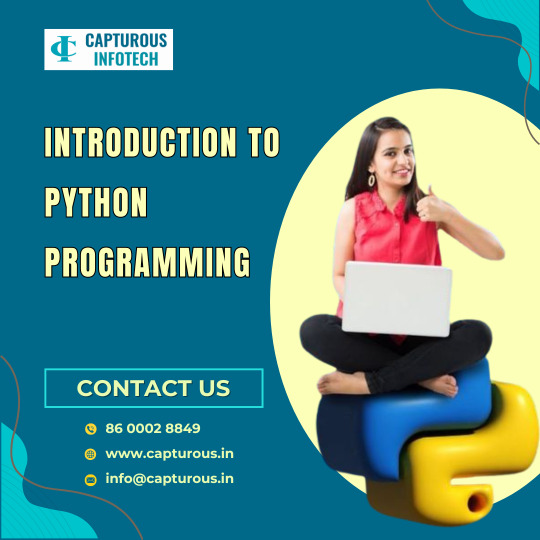
#Learn Python from A to Z#Python For Beginners#Python Courses & Tutorials#Python for beginners - Training#Best Online Python Courses and Programs#Python Course and Certification Online#Best Python Classes in Nagpur#Python Courses and Tutorials#Learn Python Programming#Best Python Training Institute in Nagpur#Introduction to Python Programming
0 notes
Text
Common techniques for feature selection and transformation
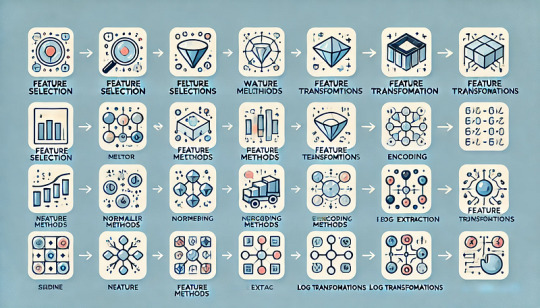
Feature selection and transformation are crucial steps in feature engineering to enhance machine learning model performance.
1️⃣ Feature Selection Techniques
Feature selection helps in choosing the most relevant features while eliminating redundant or irrelevant ones.
🔹 1. Filter Methods
These techniques evaluate features independently of the model using statistical tests. ✅ Methods:
Correlation Analysis → Select features with a high correlation with the target.
Chi-Square Test → Measures dependency between categorical features and the target variable.
Mutual Information (MI) → Evaluates how much information a feature provides about the target.
📌 Example (Correlation in Python)pythonimport pandas as pddf = pd.DataFrame({'Feature1': [1, 2, 3, 4, 5], 'Feature2': [10, 20, 30, 40, 50], 'Target': [0, 1, 0, 1, 0]}) correlation_matrix = df.corr() print(correlation_matrix)
🔹 2. Wrapper Methods
These methods use a machine learning model to evaluate feature subsets. ✅ Methods:
Recursive Feature Elimination (RFE) → Iteratively removes the least important features.
Forward/Backward Selection → Adds/removes features step by step based on model performance.
📌 Example (Using RFE in Python)pythonfrom sklearn.feature_selection import RFE from sklearn.ensemble import RandomForestClassifiermodel = RandomForestClassifier() selector = RFE(model, n_features_to_select=2) # Select top 2 features selector.fit(df[['Feature1', 'Feature2']], df['Target']) print(selector.support_) # True for selected features
🔹 3. Embedded Methods
These methods incorporate feature selection within model training. ✅ Examples:
Lasso Regression (L1 Regularization) → Shrinks coefficients of less important features to zero.
Decision Trees & Random Forest Feature Importance → Selects features based on their contribution to model performance.
📌 Example (Feature Importance in Random Forest)pythonmodel.fit(df[['Feature1', 'Feature2']], df['Target']) print(model.feature_importances_) # Higher values indicate more important features
2️⃣ Feature Transformation Techniques
Feature transformation modifies data to improve model accuracy and efficiency.
🔹 1. Normalization & Standardization
Ensures numerical features are on the same scale. ✅ Methods:
Min-Max Scaling → Scales values between 0 and 1.
Z-score Standardization → Centers data around mean (0) and standard deviation (1).
📌 Example (Scaling in Python)pythonfrom sklearn.preprocessing import MinMaxScaler, StandardScalerscaler = MinMaxScaler() df[['Feature1', 'Feature2']] = scaler.fit_transform(df[['Feature1', 'Feature2']])
🔹 2. Encoding Categorical Variables
Converts categorical data into numerical format for ML models. ✅ Methods:
One-Hot Encoding → Creates binary columns for each category.
Label Encoding → Assigns numerical values to categories.
📌 Example (One-Hot Encoding in Python)pythodf = pd.get_dummies(df, columns=['Category'])
🔹 3. Feature Extraction (Dimensionality Reduction)
Reduces the number of features while retaining important information. ✅ Methods:
Principal Component Analysis (PCA) → Converts features into uncorrelated components.
Autoencoders (Deep Learning) → Uses neural networks to learn compressed representations.
https://www.ficusoft.in/deep-learning-training-in-chennai/from sklearn.decomposition import PCApca = PCA(n_components=2) reduced_features = pca.fit_transform(df[['Feature1', 'Feature2']]
🔹 4. Log & Power Transformations
Used to make skewed data more normally distributed. ✅ Methods:
Log Transformation → Helps normalize right-skewed data.
Box-Cox Transformation → Used for normalizing data in regression models.
📌 Example (Log Transformation in Python)pythonimport numpy as npdf['Feature1'] = np.log(df['Feature1'] + 1) # Avoid log(0) by adding 1
Conclusion
✅ Feature Selection helps remove irrelevant or redundant features. ✅ Feature Transformation ensures better model performance by modifying features.
WEBSITE: https://www.ficusoft.in/deep-learning-training-in-chennai/
0 notes
Text
Thursday, February 06, 2025 Canadian TV Listings (Times Eastern)
WHERE CAN I FIND THOSE PREMIERES?: THE KARDASHIANS (Disney + Star) THE Z-SUITE (Tubi) THE TAKEDOWN: AMERICAN ARYANS (Crave) 9:00pm
NEW TO AMAZON PRIME CANADA/CBC GEM/CRAVE TV/DISNEY + STAR/NETFLIX CANADA:
AMAZON PRIME CANADA 1408 40 DAYS AND 40 NIGHTS ABOUT ADAM ADDICTED THE ARTIST BACHELORETTE THE BAXTER BIRTHDAY GIRL BLUE VALENTINE CLEAN SLATE THE COOKOUT DIRTY GIRL DOWN TO YOU EARLY MAN ENDER’S GAME EVE’S BAYOU FOR COLORED GIRLS GNOMEO AND JULIET GOOD LUCK CHUCK HELD UP THE ILLUSIONIST INVINCIBLE (Season 3) KEVIN HART: LET ME EXPLAIN THE ORDER PEEPLES SCHOOL DANCE SHADOWS IN THE SUN TYLER PERRY’S MADEA’S TOUGH LOVE TYLER PERRY’S DADDY’S LITTLE GIRLS THE WASH
CBC GEM THE NATURE OF THINGS: SHARED PLANET: WATERS
CRAVE TV THE TAKEDOWN: AMERICAN ARYANS
DISNEY + STAR THE KARDASHIANS (Season 6, premiere episode)
NETFLIX CANADA APPLE CIDER VINEGAR (AU) THE ÅRE MURDERS (SE) CASSANDRA (DE) GOLDEN KAMUY -THE HUNT OF PRISONERS IN HOKKAIDO SUPREME MODELS: LIMITED SERIES SWEET MAGNOLIAS (Season 4)
RIVALRY SERIES HOCKEY (TSN/TSN4) 6:00pm: USA vs. Canada
NHL HOCKEY (SN) 7:00pm: Capitals vs. Flyers (TSN4) 7:00pm: Leafs vs. Kraken (TSN5) 7:00pm: Sens vs. Lightning (SN1/SNWest) 9:00pm: Avalanche vs. Flames (SNPacific) 10:30pm: Canucks vs. Sharks
NBA BASKETBALL (TSN3) 7:30pm: Mavericks vs. Celtics (SN Now) 9:00pm: Magic vs. Nuggets (SN360/SNOntario/SNEast) 10:00pm: Warriors vs. Lakers
DOUBLE THE MONEY (CBC) 8:00pm: The remaining eight teams return to be given their £2000 stake; they have two weeks to double the money; half the teams launch a food business, while the other half host events.
TRUTHSEEKERS (Cottage Life) 8:00pm (SERIES PREMIERE): Uncovering the mystery of the Holy Grail.
THE NATURE OF THINGS (CBC) 9:00pm: Shared Planet: Water: Water provides the largest habitat on Earth, but water-dependent wildlife is declining fast. Learning to share these watery worlds can offer a brighter future for the entire planet.
WATER WORLDS (APTN) 9:00pm: Estuaries, known as the cradle of life, create some of Earth's most productive ecosystems; over time, human activity has damaged them, but indigenous and non-indigenous communities are working together to restore and preserve these vital areas.
SIDE HUSTLERS (Slice) 9:00pm (SEASON PREMIERE): A new group of female entrepreneurs pitch their businesses to earn mentorship from investors Ashley Graham and Emma Grede; the competition is fierce to determine which founders have what it takes to transform their side hustle.
SWAMP PEOPLE: SERPENT INVASION (History Channel Canada) 9:00pm (SEASON PREMIERE): Zak and Aaron team up with a gladesman promising to bring them to a python jackpot; Troy gets his old partner Pickle back into fighting shape; and Bruce and Kaylyn return to a monster's den.
FAKE (Super Channel Fuse) 9:00pm: Birdie is excited to celebrate Anton's wedding with Joe by her side; their plans fall apart when Joe urgently needs a property deposit; with their future at stake, Birdie scrambles to gather the money.
PAMELA'S GARDEN OF EDEN (Home Network) 10:00pm: My Favorite Things
CANADIAN REFLECTIONS (CBC) 11:30pm: Harbour; Out With the Old
#cdntv#cancon#canadian tv#canadian tv listings#double the money#the nature of things#water worlds#fake#pamela's garden of eden#canadian reflections#hockey#nhl hockey#nba basketball
0 notes
Text
Decoding the Hype: How AI is Reshaping Personal Finance and Investment Strategies in 2025

Artificial Intelligence (AI) is no longer just a buzzword in the tech space—it's becoming the backbone of the modern financial world. In 2025, AI is redefining how individuals manage their money, how investment decisions are made, and how banks and fintechs engage with customers. This shift isn't just a passing trend—it's a seismic change in the way we interact with our finances.
Whether you're a retail investor, a budding financial analyst, or a finance student considering an investment banking course in Pune, understanding this transformation is crucial to staying relevant and competitive in the industry.
The Rise of AI in Personal Finance
AI is empowering individuals to take control of their personal finances like never before. From smart budgeting tools to AI-powered credit scoring, the technology is making financial planning more accessible and tailored.
Key Innovations in 2025:
AI-Driven Budgeting Apps: Tools like Cleo and YNAB use machine learning to track spending habits and provide smart suggestions for saving money.
Personal Finance Chatbots: Virtual assistants help users manage bills, set financial goals, and even negotiate better deals on subscriptions.
Creditworthiness Assessments: Fintechs are now using AI to assess creditworthiness beyond traditional credit scores, using data like payment history, transaction patterns, and social behavior.
AI-Powered Investment Strategies
The traditional model of investing—relying on human advisors or self-directed research—is being enhanced and, in many cases, replaced by AI-based platforms.
Top Trends:
Robo-Advisors 2.0: Platforms like Zerodha’s smallcase, Groww, and INDmoney now use machine learning algorithms to curate portfolios based on user behavior, market signals, and risk tolerance.
Predictive Analytics: AI can analyze years of market data in seconds, helping investors predict asset performance and manage risks better.
Sentiment Analysis Tools: AI scans social media, news, and earnings reports to determine investor sentiment, giving real-time insights into market moves.
A Real-World Example:
Indian fintech platform INDmoney uses AI to automate financial tracking and suggest optimal investment paths, becoming a one-stop wealth management platform for millennials and Gen Z investors.
The AI Advantage for Financial Advisors and Investment Bankers
For finance professionals, AI isn't about replacement—it's about enhancement. Financial advisors and investment bankers now use AI tools to increase efficiency, accuracy, and client satisfaction.
Applications in Investment Banking:
Deal Sourcing & Market Research: AI scans vast datasets to identify merger & acquisition opportunities and investment trends.
Risk Assessment: AI helps assess credit and market risks in real-time, helping analysts and investors make better decisions.
Client Profiling: AI tools generate deep insights into client behavior and preferences, leading to better service personalization.
If you're pursuing an investment banking course in Pune, it's essential that the curriculum covers the integration of AI into banking workflows. Understanding financial modeling and valuation is no longer enough—today’s investment banker must also be data-savvy and AI-aware.
Why Finance Students Should Learn AI Now
AI is not just a tool for techies—it's a career-defining skill for finance professionals. If you're a student or aspiring finance expert, combining core financial knowledge with AI literacy can set you apart in an increasingly competitive job market.
Skills in Demand:
Data analytics and visualization
Python or R programming
Knowledge of AI tools like ChatGPT, Tableau, and Power BI
Understanding of algorithms in finance
Many forward-thinking institutions offering an investment banking course in Pune are now including modules on data science, machine learning, and AI applications in finance. This holistic approach ensures students are job-ready for the AI-powered finance world.
Future Outlook: What’s Next?
As AI continues to evolve, the financial industry will become more proactive than reactive. Here’s what we can expect next:
Hyper-personalized investment portfolios
Voice-activated financial management tools
Real-time fraud detection systems
AI-driven ESG (Environmental, Social, and Governance) investing
Financial institutions that embrace AI will stay ahead of the curve. And individuals who learn to work with AI, not against it, will be the ones leading the next wave of innovation in finance.
Conclusion
The intersection of AI and finance is creating a new era of smart, data-driven decision-making for both individuals and institutions. Whether you’re managing your own money or advising others on theirs, adapting to this new reality is non-negotiable.
If you’re aspiring to build a career in this rapidly evolving space, enrolling in an investment banking course in Pune that integrates AI and data analytics could be your smartest move in 2025. After all, the future of finance isn’t just financial—it’s intelligent.
0 notes
Text
Top Skills You Need to Master AI Robotics in 2025
As artificial intelligence (AI) and robotics continue to evolve, the demand for skilled professionals in this field has skyrocketed. Whether you're an aspiring AI robotics engineer or looking to enhance your current skill set, mastering the right skills can propel you to the forefront of this cutting-edge industry. Here's a comprehensive guide to the top skills you need to excel in AI robotics in 2025.
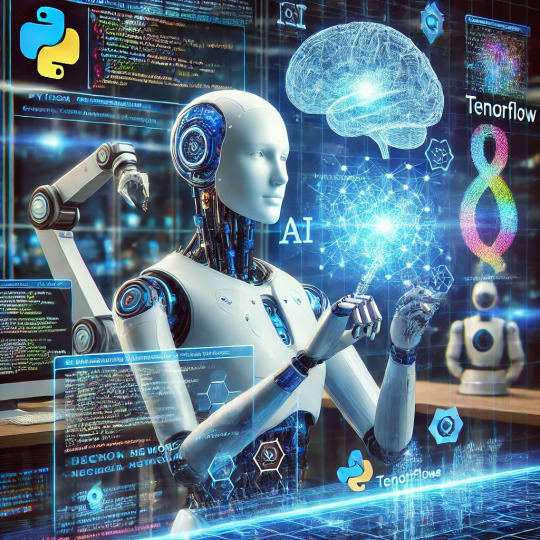
1. Programming Proficiency
Programming is the cornerstone of AI and robotics. Poficiency in languages like Python, C++, and Java is essential. Python, in particular, is widely used in AI due to its simplicity and a vast array of libraries like TensorFlow, PyTorch, and OpenCV. Mastering these languages allows you to develop algorithms, manage data, and create machine learning models effectively.
Key Areas to Focus On:
Object-oriented programming
Algorithms and data structures
Real-time programming for robotics
Recommended Courses:
"Python for Everybody" by University of Michigan (Coursera)
"Programming for AI and Robotics" by AI Certs
"C++ for Robotics" by Udemy
2. Machine Learning and Deep Learning
AI robotics relies heavily on machine learning (ML) and deep learning (DL) techniques to enable robots to learn from data and make decisions. Understanding supervised, unsupervised, and reinforcement learning can give you a competitive edge.
Recommended Tools and Frameworks:
TensorFlow
PyTorch
Scikit-learn
Learning Resources:
"Machine Learning Specialization" by Andrew Ng (Coursera)
"Deep Learning with TensorFlow" by AI Certs
"Deep Learning A-Z" by Udemy
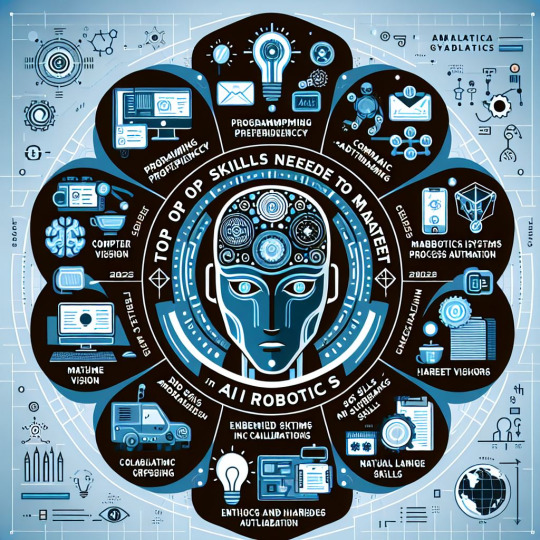
Explore AICERT’s wide range of AI Robotics certifications, and don’t forget to use the code NEWUSERS25 for a 25% discount on all courses. Click here to start your journey into AI Robotics today!
“Have questions or are ready to take the next step in your AI certification journey? Reach out to us at AI CERTs — our team is here to guide you every step of the way!”
3. Computer Vision
Robots often rely on computer vision to perceive and interpret their surroundings. Skills in computer vision involve working with image processing, feature extraction, and object detection techniques.
Key Technologies:
OpenCV
YOLO (You Only Look Once)
Convolutional Neural Networks (CNNs)
Recommended Courses:
"Computer Vision Basics" by University at Buffalo (Coursera)
"Applied Computer Vision with OpenCV" by AI Certs
"Mastering YOLO for Real-World Applications" by Edureka
4. Robotics Process Automation (RPA)
RPA involves automating repetitive tasks using robots. Proficiency in RPA tools like UiPath, Automation Anywhere, and Blue Prism is a valuable skill for integrating AI with robotics.
Applications:
Automating assembly lines
Streamlining back-office operations
Optimizing logistics
Recommended Courses:
"RPA Developer Training" by UiPath Academy
"Robotic Process Automation Certification" by AI Certs
"RPA for Beginners" by Simplilearn
5. Mathematics and Statistical Analysis
A strong foundation in mathematics is critical for understanding algorithms and optimizing models. Key areas include linear algebra, calculus, and probability.
Practical Use Cases:
Calculating robot kinematics and dynamics
Designing neural network architectures
Analyzing model performance using statistical metrics
Recommended Courses:
"Mathematics for Machine Learning" by Imperial College London (Coursera)
"Statistics and Probability for AI" by AI Certs
"Advanced Math for Data Science" by Udemy
6. Data Engineering and Big Data Analysis
AI robotics thrives on data. The ability to collect, clean, and analyze data is crucial. Understanding big data tools like Hadoop, Spark, and SQL will help you handle large datasets effectively.
Focus Areas:
Data preprocessing
Feature selection and extraction
Handling structured and unstructured data
Recommended Courses:
"Big Data Engineering" by IBM (Coursera)
"Data Science and Big Data Foundations" by AI Certs
"Apache Spark for Data Engineers" by Pluralsight
7. Embedded Systems and Hardware Skills
Robots are not just about software; they also require sophisticated hardware. Knowledge of embedded systems, microcontrollers (like Arduino and Raspberry Pi), and sensors can significantly enhance your skill set.
Hands-On Experience:
Building and programming microcontroller-based robots
Integrating sensors for real-time data collection
Optimizing hardware-software interaction
Recommended Courses:
"Introduction to Embedded Systems" by University of Texas (edX)
"Arduino and Robotics Bootcamp" by AI Certs
"Raspberry Pi for Beginners" by Udemy
8. Natural Language Processing (NLP)
As robots become more interactive, NLP is crucial for enabling machines to understand and process human language. Skills in NLP empower you to work on projects like voice assistants and conversational robots.
Popular Tools:
NLTK (Natural Language Toolkit)
spaCy
Hugging Face Transformers
Recommended Courses:
"Natural Language Processing Specialization" by deeplearning.ai (Coursera)
"AI-Driven NLP Solutions" by AI Certs
"NLP Fundamentals" by Simplilearn
9. Soft Skills and Collaboration
In addition to technical expertise, soft skills play a pivotal role in AI robotics. Problem-solving, critical thinking, and teamwork are essential when working in multidisciplinary teams.
Why It Matters:
Collaboration with designers, engineers, and business strategists ensures the success of robotics projects.
Recommended Resources:
"Critical Thinking Masterclass" by LinkedIn Learning
"Team Collaboration for AI Projects" by AI Certs
"Problem-Solving Techniques" by edX
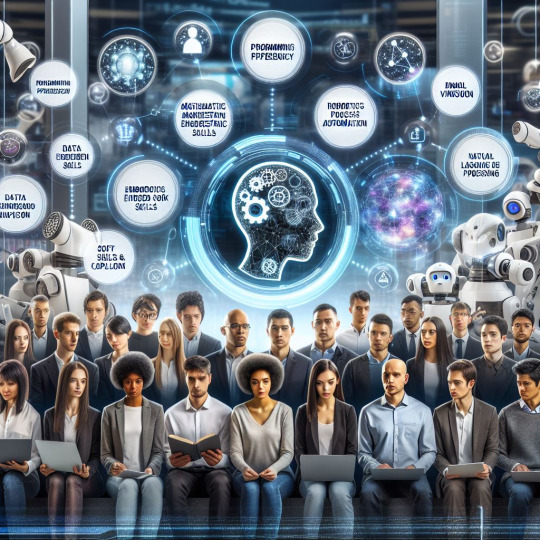
10. Ethics and Compliance in AI Robotics
As AI becomes more pervasive, ethical considerations and compliance are gaining importance. Familiarity with AI ethics, data privacy laws, and responsible AI practices can set you apart as a forward-thinking professional.
Key Principles:
Ensuring transparency and fairness in AI models
Addressing bias and discrimination in algorithms
Adhering to regulations like GDPR and AI Act
Recommended Courses:
"AI Ethics and Responsible AI" by University of Helsinki (Elements of AI)
"Ethics in AI Systems" by AI Certs
"AI Compliance Fundamentals" by Coursera
Final Thoughts
Mastering AI robotics in 2025 requires a blend of technical, analytical, and interpersonal skills. By staying updated with the latest tools and technologies and honing your expertise in these areas, you can position yourself as a leader in this transformative field. Start building your skills today, and be part of the future-shaping industries worldwide.
0 notes
Text
Unlocking Opportunities in a Data-Driven World: Why You Should Master Data Science
In today’s fast-paced digital era, data science has emerged as a game-changing skill across industries. Organizations rely on data scientists to unravel complex datasets, generate actionable insights, and influence critical business decisions. Whether you’re starting from scratch or aiming to refine your expertise, diving into data science can unlock a wealth of career opportunities. Here’s how you can get started with top-notch courses designed for aspiring data scientists.
Why Pursue Data Science?
Data science is an interdisciplinary field that blends programming, statistics, and domain expertise to uncover patterns and insights hidden within data. As businesses generate massive amounts of data daily, professionals with data science expertise are more in demand than ever. Here’s why learning data science could be your next big career move:
High Earning Potential: Data science professionals command competitive salaries and excellent growth prospects.
Versatile Career Options: From data analysts and machine learning engineers to AI specialists and business intelligence experts, the possibilities are vast.
Meaningful Work: Contribute to solving real-world challenges, optimizing business processes, and enhancing customer experiences.
Future-Proof Your Career: With rapid technological advancements, data science remains a cornerstone across industries.
Explore Top Data Science Courses
1. Coursera - Data Science Specialization (Johns Hopkins University)
Overview: A 10-course program covering data cleaning, exploratory analysis, machine learning, and R programming.
Why Choose It: Comprehensive and beginner-friendly with practical projects to showcase your skills.
2. edX - MicroMasters in Data Science (University of California, San Diego)
Overview: Advanced training in Python, machine learning, and big data analytics.
Why Choose It: Ideal for professionals seeking in-depth technical skills and certification.
3. Udemy - Data Science A-Z™: Real-Life Data Science Exercises Included
Overview: A hands-on course emphasizing data preprocessing, visualization, and practical exercises.
Why Choose It: Affordable, flexible, and perfect for quick skill enhancement.
4. Google’s Data Analytics Professional Certificate (Coursera)
Overview: A beginner-friendly program covering tools like Excel, SQL, and Tableau for data analysis and visualization.
Why Choose It: Entry-level certification with industry recognition.
5. Kaggle Learn
Overview: Free, self-paced micro-courses on Python, Pandas, and machine learning.
Why Choose It: Focused on practical coding challenges with flexibility to fit any schedule.
Essential Skills to Master
By enrolling in data science courses, you’ll develop expertise in:
Programming: Learn Python, R, and SQL for effective data handling and analysis.
Statistical Analysis: Interpret data using advanced statistical methods.
Machine Learning: Build predictive models and understand key algorithms.
Data Visualization: Create impactful visuals using Tableau, Power BI, or Matplotlib.
Big Data Tools: Gain hands-on experience with Hadoop, Spark, and other big
#data science#data analytics#data science training#data security#data science course#data science internship
0 notes
Text
Are you considering a career in Blockchain Technology
Blockchain technology has quickly emerged as one of the most transformative and disruptive innovations of the 21st century. Initially recognized as the underlying technology behind cryptocurrencies like Bitcoin, blockchain has since expanded its reach into various industries, including finance, supply chain management, healthcare, and more. With its ability to provide secure, transparent, and tamper-proof transactions, blockchain is redefining the way we handle data and conduct business.

Why Choose a Career in Blockchain Technology?
1. High Demand and Lucrative Salaries
The demand for blockchain professionals is outpacing the supply, making it one of the most sought-after skill sets in the tech industry. Companies are willing to offer competitive salaries and benefits to attract talent. According to recent data, blockchain developers can earn an average salary of $120,000 to $180,000 per year, with experienced professionals earning even more.
2. Diverse Career Opportunities
Blockchain technology offers a wide range of career paths. Some of the key roles in this field include:
Blockchain Developer: Involves designing and developing blockchain protocols, smart contracts, and decentralized applications (dApps).
Blockchain Architect: Focuses on designing and building the architecture of blockchain systems.
Blockchain Analyst: Specializes in analyzing and evaluating blockchain applications and their impact on various industries.
Blockchain Consultant: Provides expertise to businesses on how to implement and integrate blockchain technology into their operations.
3. Industry-Wide Applications
Blockchain is not limited to cryptocurrency. Its applications span various sectors:
Finance: Enhancing security, reducing fraud, and enabling faster transactions.
Supply Chain Management: Providing transparency and traceability for products from origin to consumer.
Healthcare: Securing patient data and streamlining medical records.
Government: Enhancing transparency and security in public records and voting systems.
Skills Required for a Career in Blockchain
To succeed in the blockchain field, you need a mix of technical and soft skills, including:
Programming: Proficiency in programming languages like Python, JavaScript, Solidity (for smart contracts), and C++.
Cryptography: Understanding of cryptographic principles and techniques used in blockchain networks.
Distributed Systems: Knowledge of how distributed ledger technology (DLT) works and how to implement it.
Smart Contracts: Ability to write and deploy smart contracts on platforms like Ethereum.
Recommended Courses to Kickstart Your Blockchain Career
Blockchain+ Developer™ (AI CERTs)
Overview: Blockchain+ Developer™ by AI CERTs is an advanced certification designed to equip professionals with the knowledge to integrate artificial intelligence (AI) with blockchain technology. This course covers AI-powered smart contracts and decentralized applications. Professionals in blockchain development, AI integration, and those interested in implementing AI solutions within blockchain ecosystems will benefit greatly.
Use the coupon code NEWCOURSE25 to get 25% OFF on AI CERTS’ certifications. Don’t miss out on this limited-time offer! Visit this link to explore the courses and enroll today.
Certified Blockchain Professional by Blockchain Council
Overview: This course provides an in-depth understanding of blockchain technology, including its architecture, algorithms, and applications. It covers key concepts such as smart contracts, consensus mechanisms, and blockchain security, making it an ideal choice for beginners and professionals looking to enhance their blockchain expertise.
Blockchain A-Z™: Learn How to Build Your First Blockchain by Udemy
Overview: This course is designed to provide hands-on experience in building a blockchain from scratch. It covers the fundamentals of blockchain, smart contracts, and how to create cryptocurrency. It’s a practical course that guides you through the entire process of creating and implementing blockchain solutions.
Blockchain Basics by Coursera (Offered by University of California, Irvine)
Overview: This beginner-friendly course covers the fundamental concepts of blockchain technology, including its history, components, and applications. It’s ideal for those new to blockchain who want to gain a solid understanding of how it works and its potential impact on various industries.

Conclusion
A career in blockchain technology offers exciting opportunities to work with cutting-edge innovations that have the potential to transform various industries. With the high demand for skilled professionals and the diverse career paths available, now is an excellent time to pursue a career in blockchain. By acquiring the necessary skills through courses like AI+ Data™ by AI Certs or other specialized programs, you can position yourself at the forefront of this dynamic field. Whether you’re interested in developing blockchain applications, designing blockchain architectures, or analyzing blockchain systems, the possibilities are endless in this rapidly growing domain.
1 note
·
View note